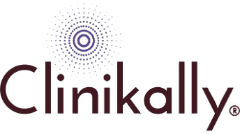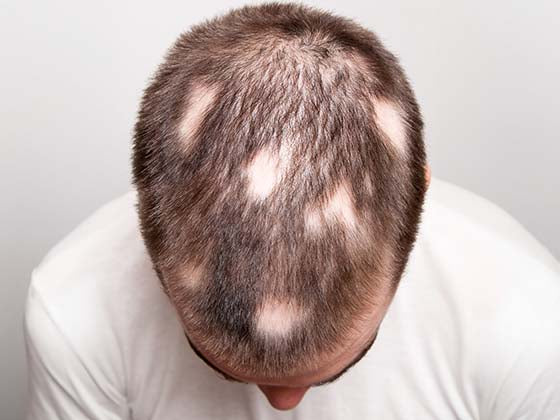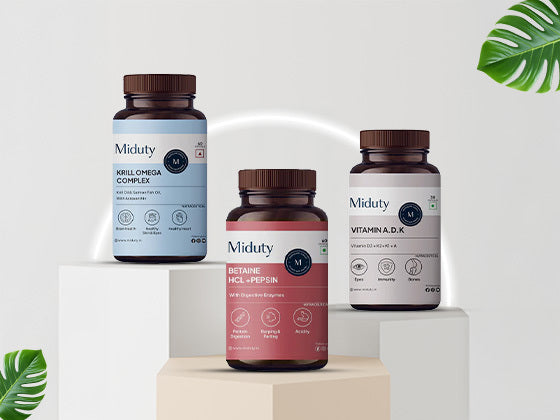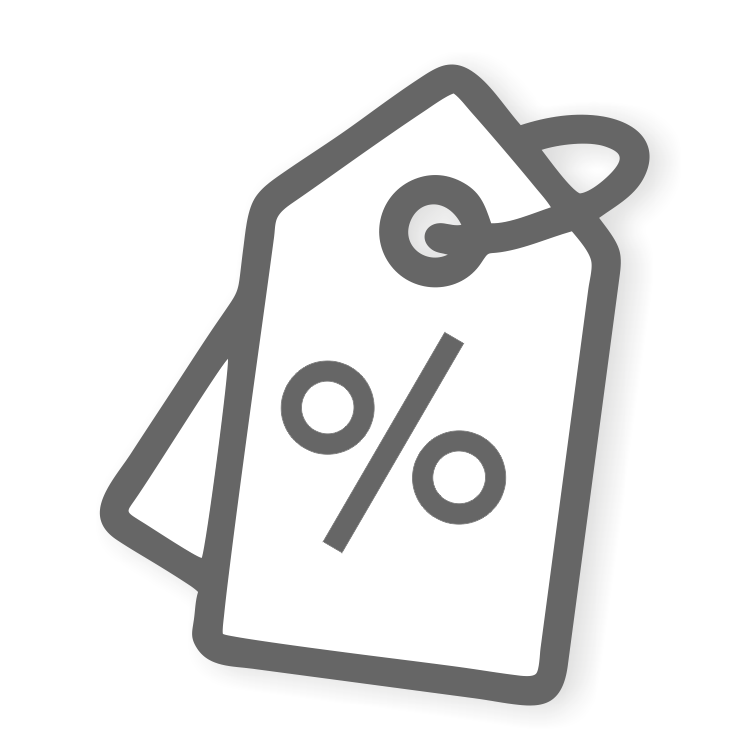- Working of Glycolic Acid
- Structure of Glycolic Acid
- Glycolic Acid & Scalp Exfoliation
- Glycolic Acid & Scalp pH
- Anti Dandruff Action of Glycolic Acid
- Incorporating Glycolic Acid into Routine
- Do’s & Don’ts of Glycolic Acid
- Glycolic Acid Scalp Treatment Guide
- FAQs
Glycolic acid, a popular skincare ingredient, is now causing a stir in the hair care industry for its amazing benefits in enhancing and boosting the health of the scalp and significantly improving hair texture. Extracted from sugarcane, this alpha hydroxy acid (AHA) gently exfoliates the scalp, thereby eliminating excess sebum, buildup, and dead skin cells that result in clogging the hair follicles. By inducing a cleaner, healthier scalp environment, this gentle AHA- glycolic acid can facilitate improved hair growth and increase overall hair vitality. In addition, it also maintains the moisture level of the hair shaft thereby enhancing smoothness, softness, and shine of the hair. As consumers increasingly look to science-driven answers, glycolic acid is becoming an ally to contend with for healthier, more vibrant-looking hair.
What Is Glycolic Acid and How Does It Work on Hair?

Glycolic acid is an alpha hydroxy acid (AHA) that is derived from sugarcane. It is usually characterized by the small molecular structure and superior capability for penetrating into skin and scalp. Applying glycolic acid to hair and scalp functions in a subtle, exfoliative manner of peeling surface film, destroying, and dissolving dead skin, oil, product accumulation, as well as over-prolifications of the pore-blocking form on the surface. This eases the restrictions to promote clear hair emergence through follicular free flow. This deep-cleansing effect induces a healthier scalp condition. This results in a thicker hair growth. Glycolic acid also assists in locking in moisture in the hair shaft, causing hair to feel softer, appear shinier, and become easier to manage with consistent usage.
The Molecular Structure of Glycolic Acid Explained

Glycolic acid is a favorite skincare ingredient particularly for those who are looking for exfoliation and skin whitening. It is highly effective in clearing the skin of dead skin cells, thereby, leaving it much smoother, shinier and fresher-looking. It occurs due to its small size and unique chemical composition.
-
Glycolic acid has a very simple chemical structure, which allows it to penetrate into the skin.
-
It consists of only a few basic atoms—carbon, hydrogen, and oxygen.
-
There are two significant components in its structure: one component that makes it acidic and another component that is water-attracting.
-
The acidic component assists in breaking the bonds that stick the dead skin cells together.
-
The water-attracting component (hydrophilic) makes it easily dissolvable in water-based skincare products, thereby improving the consistency of the formulation.
-
Because of its small structure, Glycolic Acid works more quickly and deeper than other counterparts.
-
Due to its small structure and size, this molecule blends well with water in the skin, thereby improving efficiency.
-
It efficiently removes the top most layer of dull, rough and dead skin cells. This results in revealing a smoother, brighter skin beneath.
-
Its small size also makes it possible for it to be powerful, which is why it's used with caution in skincare.
-
This acid belongs to a class of compounds named AHAs (alpha hydroxy acids) that are well recognized to offer the skin a smoothing action.
Simply put, glycolic acid is so effective because it's small and has a good combination of characteristics to deconstruct old cells on the skin and pave the way for new ones. That is why it's a star ingredient in products that want to brighten, smooth, and rejuvenate your skin.
How Glycolic Acid Acts as a Scalp Exfoliant

Glycolic acid acts as a mild exfoliating acid that dislodges dead skin cells, excess sebum, and product buildup from hair products which tend to congest the scalp. Having such a small molecular size, it easily penetrates the surface of the scalp, making it an excellent ingredient for enhancing scalp health and hair growth.
-
Glycolic acid dissolves the dead skin cells that accumulate on the scalp.
-
It effectively removes excess oil and residual product as these may cause hair follicles to become clogged.
-
This creates an environment that is healthier and supportive for hair growth.
-
It also softens the scalp and prevents dryness, dandruff flakes and itch.
-
This improves the penetration of scalp serums and other hair care products.
-
This prevents various scalp conditions such as folliculitis (inflamed hair follicles).
-
It does not leave any residue as it is excessively water soluble and is easy to rinse off.
-
When properly formulated and used in the correct concentration, glycolic acid works gently.
-
It maintains the scalp's natural pH balance.
-
Cleaner, exfoliated scalp skin can mean stronger, shinier, and healthier-looking hair.
Through gentle exfoliation and the removal of buildup, it lays the groundwork for healthier hair growth and a flake-free, balanced scalp.
Glycolic Acid’s Role in Balancing Scalp pH

Glycolic acid, in addition to scalp exfoliation, also aids in balancing the pH of the scalp. A healthy scalp is slightly acidic in pH. This maintains its natural skin barrier that shields against damaging microbes. As a result, an environment that promotes healthy hair growth is achieved. When pH is out of balance—too alkaline or too acidic—it can cause dryness, irritation, or oiliness. Glycolic acid gently and effectively restores this balance.
-
Glycolic acid occurs naturally as an acid, and this assists in restoring the pH of the scalp to its optimal level (about 4.5–5.5).
-
It assists in counteracting the impact of strong shampoos or styling agents that can increase scalp pH.
-
By keeping the scalp at the correct pH, glycolic acid assists in fortifying the protective barrier of the scalp.
-
A healthy pH discourages the excessive growth of harmful bacteria and fungi, decreasing the likelihood of dandruff or irritation.
-
It helps maintain the scalp's capacity for oil regulation—avoiding both dryness and greasiness.
-
Glycolic acid enables improved uptake of other scalp and hair care products that are most effective with slightly acidic pH levels.
-
It soothes irritation due to pH imbalance or exposure to environmental factors.
-
A well-balanced scalp environment keeps the hair follicles healthier and stronger.
-
Daily scalp care with glycolic acid can result in more comfortable, itch-free skin.
-
Its gentle pH-restoring ability is effective even on sensitive scalps when applied properly.
Essentially, glycolic acid maintains a healthy scalp by softly coaxing it back to its natural pH. This equilibrium is crucial for avoiding scalp problems and setting the ideal environment for healthy, strong, shiny, and well-nourished hair.
The Benefits of Glycolic Acid for Hair and Scalp

Glycolic acid, a potent alpha hydroxy acid (AHA) that has long been found in skincare, is increasingly finding fame for its revolutionary action when applied to hair care. Based on sugarcane, glycolic acid possesses a very small molecular structure that enables it to penetrate thoroughly into the scalp and hair shaft, yielding spectacular results. When added to hair care regimens, it functions as a mild exfoliate that eliminates dead skin cells, excess oil, and product residue on the scalp—elements that usually impede healthy hair growth. Aside from cleaning, glycolic acid also serves to lock moisture into the hair, resulting in smoother, softer, and shinier locks. Its capacity to revive the scalp makes it perfect for those with issues of dandruff, flakiness, or dull locks. With increasingly more consumers adopting science-based beauty solutions, glycolic acid is becoming a multi-functional ingredient that cares for both scalp health and hair appearance. From roots to ends, it provides a way towards healthier, brighter hair.
Hydrating and Nourishing Effects

Glycolic acid is an excellent exfoliant, but it also boasts remarkable hydrating and feeding properties for scalp and hair. Although its primary role is to remove dead skin and residue, it also assists in better moisture maintenance and enhances scalp condition, which has a direct bearing on hair health. When formulated correctly, glycolic acid can make scalp and strands feel softer, smoother, and refreshed.
-
Glycolic acid enhances the scalp's moisture retention by clearing out buildup that clogs up hydration.
-
It smoothly softens the scalp surface, enabling moisturizers and beneficial ingredients to penetrate better.
-
Through helping maintain the scalp barrier, it prevents water loss and maintains hydration in the skin.
-
Through its humectant-like activity, it attracts moisture from the air into the scalp.
-
It softens dryness and flakiness, which tend to happen due to a dehydrated scalp.
-
Healthier, hydrated scalp skin enhances stronger, more durable hair growth.
-
Glycolic acid is able to soften hair texture by stripping away residue and restoring natural smoothness.
-
It thickens the scalp's natural lipid layer, which helps to keep both scalp and hair hydrated.
-
A well-nourished scalp is less likely to irritate, itch, and sting.
-
Ongoing use can leave the scalp feeling more balanced, refreshed, and soothed over time.
Overall, glycolic acid does more than exfoliate by actually hydrating and feeding the scalp and hair. It seals in moisture, enhances uptake of care products, and sets the stage for a healthier, shinier mane.
Reducing Dandruff and Flakiness

Glycolic acid is also essential to preventing dandruff and scalp flakiness by keeping the scalp environment clean, balanced, and healthy. Although it's commonly used to correct existing scalp problems, regular use as a preventive measure can prevent flakes and irritation from forming in the first place. Its exfoliating and pH-balancing actions make it an intelligent addition to any proactive scalp treatment regimen.
-
Glycolic acid eliminates dead skin cells gently before they accumulate into visible flakes.
-
It keeps the scalp clear of excess oil and product residue that can cause dandruff.
-
Maintaining an optimal pH level, it fosters an environment that is less conducive to yeast and bacterial overgrowth.
-
Daily use promotes healthy, ongoing skin cell turnover, avoiding the thick, scaly patches that typically accompany flakiness.
-
It moisturizes the scalp as it exfoliates, lessening dryness that can become irritation and peeling.
-
An exfoliated, clean scalp better absorbs anti-dandruff and moisturizing agents.
-
Stopping clogged follicles minimizes inflammation and flake formation risk.
-
Its calming action soothes minor scalp irritation before it progresses to flaking.
-
Glycolic acid balances oil output, avoiding excessive dryness or greasiness.
-
With time, regular use conditions the scalp to remain healthier and less susceptible to repeating dandruff or flakiness.
Effectively, glycolic acid is an anticipatory scalp protection—stripping away initial instigators, achieving equilibrium, and establishing a framework in which dandruff and flakiness are much less likely to form.
Promoting Stronger and Shinier Hair

Glycolic acid helps to make hair stronger and more lustrous by improving scalp health, which is necessary for maximum hair follicle function. Although it does not directly influence the hair shaft, its exfoliating, moisturizing, and pH-balancing effects enhance the scalp environment—encouraging healthier hair growth and enhancing the quality of new hair strands.
-
Glycolic acid efficiently eliminates dead skin cells and product residue, reducing follicular obstruction.
-
It facilitates normal cellular turnover on the scalp, which is essential for follicular integrity.
-
By minimizing inflammation and microbial imbalance, it provides a more stable environment for hair growth.
-
Increased hydration of the scalp minimizes trans epidermal water loss, maintaining scalp barrier function.
-
A hydrated and exfoliated scalp maintains stronger anchorage of hair at the follicular level.
-
Glycolic acid enhances the penetration of topical hair treatments by increasing stratum corneum permeability.
-
Its function in sebum production regulation contributes to a balanced scalp, with prevention of conditions that interfere with hair well-being.
-
Regular use can enhance scalp microcirculation, contributing indirectly to nourishment of the follicles.
-
Less buildup and better scalp functioning contribute to better hair sheen and manageability.
-
Glycolic acid overall creates a healthier scalp biome, which is vital to producing strong and visibly shiny hair.
In short, glycolic acid increases scalp physiology through stimulation of exfoliation, hydration, and barrier balance—factors which cumulatively promote the formation of healthier, shinier, and structurally robust hair.
How to Incorporate Glycolic Acid into Your Hair Care Routine

Adding glycolic acid to your hair care regimen can make a big difference in scalp health, which subsequently boosts hair growth, strength, and luster. The trick is to apply it in the correct concentration and frequency to reap the rewards without irritating the scalp. As a pre-shampoo treatment, in a scalp serum, or in exfoliating cleansers, glycolic acid can quickly become an asset to your hair and scalp routine.
-
Begin with a glycolic acid scalp treatment or exfoliating scalp serum that is specifically designed for hair care. Pilgrim Patuá & AHA BHA Scalp Scrub is an excellent example.
-
Use glycolic acid products once or twice in a week to prevent over-exfoliation and dryness of the scalp.
-
Apply it to a dry scalp prior to shampooing, concentrating on problem areas with buildup, flakiness, or redness.
-
Leave on for the stated time (typically 5–10 minutes), then rinse well.
-
Follow up with a gentle, sulfate-free shampoo like Root Deep Sulphate Free Shampoo to eliminate loosened debris and preserve scalp equilibrium.
-
Always follow up with a hydrating conditioner or scalp moisturizer like Beauty Garage Scalp Sense Hair & Scalp Conditioner to restore moisture.
-
Do not apply glycolic acid to broken or inflamed skin to avoid irritation.
-
If using other active ingredients such as salicylic acid or retinoids, alternate their use to avoid sensitivity.
-
Gradually introduce glycolic acid, particularly if you have a sensitive scalp or pre-existing scalp conditions.
-
For optimal results, use glycolic acid in combination with a balanced regimen of gentle cleansing, hydration, and sun/scalp protection.
Overall, glycolic acid is a scalp and hair game-changer when applied wisely. Adding it to your weekly regimen, you can have a healthy scalp ecosystem, encourage firmer hair growth, and overall hair vitality.
Choosing the Right Glycolic Acid Products for Hair

Selecting the correct glycolic acid products for your scalp and hair is key so that you derive benefits such as exfoliation, hydration, and pH balance without causing irritation or imbalance. The best product must suit your scalp type, be ideally formulated for use on the scalp safely, and must be easy to incorporate into your routine.
-
Opt for products especially designed for use on the scalp—don't use facial glycolic acid products on your scalp.
-
Select a glycolic acid level between 3% and 7% for safe, effective exfoliation without over-drying.
-
Select products containing soothing or hydrating ingredients such as aloe vera, panthenol, or hyaluronic acid.
-
Read the product label for pH-balanced products (between 3.5 and 4.5) to promote scalp health.
-
For a sensitive or dry scalp, use leave-on serums or masks with a lower glycolic acid level.
-
Scalp scrubs with glycolic acid that clarify or exfoliate are better for oily or buildup scalps.
-
Choose fragrance-free if you have an irritation-prone scalp or are sensitive.
-
Patch test the product behind the ear or on a small area of the scalp before applying the full product.
-
Steer clear of products that mix glycolic acid with too many other active exfoliants to avoid irritation.
-
See a dermatologist or trichologist if you have scalp problems such as eczema, psoriasis, or seborrheic dermatitis prior to using glycolic acid.
In conclusion, selecting the proper glycolic acid hair care product entails attention to safe levels, gentle complementary ingredients, and scalp-formulated products. With the right choice, you can experience the advantages of a healthier, flake-free, and well-balanced scalp.
Dos and Don’ts of Using Glycolic Acid on Hair

Applying glycolic acid to your hair and scalp can provide significant advantages—but only if you do it right. Here are 3 must-know dos and don'ts to guide you in using it safely and effectively:
Some DOs are:
-
Do patch test first: Always apply a small quantity on a small section of your scalp to see if there is any irritation or sensitivity.
-
Do use glycolic acid products intended for the scalp: Use only products formulated for hair and scalp use to prevent unwanted side effects.
-
Do follow up with hydration: Following glycolic acid exfoliation, apply a moisturizing conditioner or scalp serum to restore scalp balance and moisture.
Some DON'Ts include:
-
Don't apply it on a broken or irritated scalp: Do not use glycolic acid on open wounds, cuts, or flare-ups of eczema or psoriasis on your scalp.
-
Don't overdo it: Use it only 1–2 times per week to avoid over-exfoliation, which may dry out or make your scalp sensitive.
-
Don't combine with too many other active ingredients: Don't stack glycolic acid with potent actives such as salicylic acid or retinoids on the scalp unless under the direction of a dermatologist.
Following these easy dos and don'ts, you can use glycolic acid safely in your hair care regimen and reap its complete scalp-cleansing and hair-nourishing rewards.
Step-by-Step Guide to a Glycolic Acid Scalp Treatment

A glycolic acid scalp treatment can thoroughly cleanse, exfoliate, and rebalance your scalp—setting the stage for healthier hair growth. Here's a quick step-by-step guide to doing it safely and effectively at home:
1. Select the right product: Pick a glycolic acid product that is specifically designed for the scalp, preferably with a concentration between 3% and 7%.
2. Do a patch test (24 hours prior): Put a small amount behind the ear or on an inconspicuous area of the scalp to check for no reaction.
3. Begin on dry, unwashed hair: Apply the glycolic acid treatment directly onto your dry scalp prior to shampooing for maximum absorption.
4. Section your hair: Section your hair using a comb to divide it in parts so that the scalp can be accessed for even application.
5. Use the product: Apply the solution directly to the scalp using the applicator or your fingertips, targeting trouble spots such as flakes, oiliness, or buildup.
6. Massage gently: Massage the product into the scalp using your fingertips (not your nails) to distribute it and stimulate blood flow.
7. Leave on: Let the treatment remain on the scalp for the prescribed time—typically 5 to 10 minutes (refer to product instructions).
8. Rinse: Rinse the product out of your hair thoroughly with lukewarm water.
9. Follow shampoo: Wash your hair with a sulfate-free, gentle shampoo to take out any lingering residue.
10. Moisturize and condition: Use a hydrating scalp serum or moisturizing conditioner to replace moisture and calm the scalp.
11. Avoid heat and active ingredients for 24 hours: Avoid using other intense active ingredients on your scalp the same day and skip styling tools.
Performed once or twice every week, this regimen can enhance scalp clarity, decrease flakes, and maintain a healthier hair climate in the long run.
Why Glycolic Acid Is the Future of Scalp and Hair Care Solutions

Glycolic Acid has the power to revolutionize scalp and hair health. With an increase in the need for targeted and science driven hair care products, glycolic acid has emerged as a game-changing ingredient. As it can exfoliate, moisturize, and revitalize the skin extraordinarily, it has emerged as a hair care revolution. It not only treats the underlying causes of prevalent scalp concerns, but also improves overall texture and luster of the hair. This makes glycolic acid an all-encompassing solution to hair health. It is so because it provides a multitude of benefits; ranging from exfoliating the scalp to hydrating the hair strands. With ongoing innovation and formulation development, glycolic acid can become a foundation for the future of hair and scalp care routines.









































